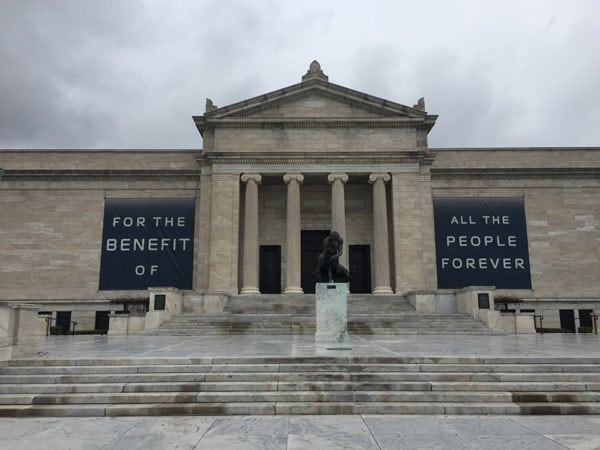
August 29, 2018; Next City
Issues of diversity, equity, and inclusion are not new to the art museum world. NPQ has reported extensively on the underrepresentation of people of color and the prevalence of white men in museum leadership. (Examples of that coverage can be found here, here, and here.) So, it was of no surprise to the Cleveland Museum of Art (CMA) when it was presented with similar numbers. Despite more than 66 percent of Cleveland’s population identifying as people of color, they constituted only 24 percent of the museum’s 600,000 annual visitors.
As CMA began outlining its vision for the future, the organization realized that simply providing free admission was not enough. If progress was to be achieved, a more intentional, strategic process to truly engage traditionally underserved communities would be needed. The result was “For The Benefit Of All: The CMA’s Diversity, Equity, And Inclusion Plan.”
The 19-page report coincides with the museum’s strategic plan and was informed by a multitude of community stakeholders. Over a nine-month period in 2017, the CMA facilitated over 100 meetings with more than 400 people throughout Cleveland. Through the process, the organization prompted people to share their perspectives on diversity and inclusion, ways to maintain relevancy and financial viability, and steps that should be taken in order to be successful.
Sign up for our free newsletters
Subscribe to NPQ's newsletters to have our top stories delivered directly to your inbox.
By signing up, you agree to our privacy policy and terms of use, and to receive messages from NPQ and our partners.
Cyra Levenson, deputy director and head of public and academic engagement at the museum, says, “We’re trying to create structural change. And so that requires setting [processes] in motion so that we are becoming as inclusive as possible and not simply doing business as usual.” As part of the plan, five areas of organizational diversity were examined: art, place, audience, resources, and organizational culture. Some of the proposed changes include: increasing acquisitions and exhibitions of historically marginalized people, seeking contracts with minority vendors, implementing accessibility initiatives, and developing inclusive programming and hiring processes.
One of major components of the plan includes the creation of fellowship and internship programs to address the lack of people of color in executive and curatorial positions. Research conducted by the Andrew W. Mellon Foundation in 2015 found that “Although 28 percent of museum staffs are from minority backgrounds [sic], the great majority of these workers are concentrated in security, facilities, finance, and human resources jobs. Among museum curators, conservators, educators and leaders, only four percent are African American and three percent [Latinx].”
So far, the organization has already hit the ground running. For instance, this past summer, the CMA hosted a pilot program for graduate students funded by the Ford and Walton Family Foundations’ Diversifying Art Museum Leadership Initiative and the Cleveland Foundation’s Arts Mastery Initiative.
While the CMA has adopted an explicit racial equity lens in support of its vision to become “a global leader among museums,” the test would be whether the organization continues to follow through on its plan. It appears that the museum has put structures in place to maintain momentum, including a commitment to appropriate resource allocation for initiatives, progress monitoring, and sponsorship by executive leadership. While just one tiny step in a decades-long journey, this report lays out a framework for the CMA’s next set of priorities and programs aimed toward achieving a more inclusive field.— Chelsea Dennis












